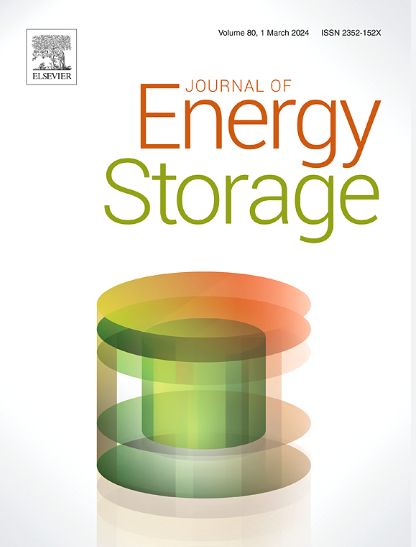稀土掺杂金属氧化物基超级电容器纳米材料研究进展
IF 8.9
2区 工程技术
Q1 ENERGY & FUELS
引用次数: 0
摘要
更大的理论比容量、无毒、成本效益和易于制造的金属氧化物纳米材料使它们成为全球范围内用于存储能量的设备的有吸引力的材料,如电池和超级电容器。基于金属氧化物纳米材料的超级电容器,通常被称为伪电容器,在过去的几年里得到了成倍的探索。然而,这些伪电容器材料面临着诸如低导电性、有限的表面积和较差的电化学活性等问题。稀土掺杂是在金属氧化物纳米材料中产生局域电子态、提高化学活性、提高电子导电性和化学稳定性的有效途径,可以增强超级电容器中电解质离子的扩散和电荷输运。本文对稀土掺杂各种金属氧化物纳米材料进行了系统的评述。从概述超级电容器的基本原理、不同的合成策略开始,深入讨论了稀土掺杂剂对超级电容器晶体结构、表面结构、化学反应性及其与电化学活性的关系的重要性和影响。研究发现,在金属氧化物纳米材料中掺入适当的稀土元素或稀土元素氧化物杂化物可以提高材料的电化学性能。然而,大多数研究都集中在三电极结构的水性超级电容器上,关于实际固态超级电容器器件的报道有限。此外,支持实验观察的理论工作很少进行。我们回顾了各种稀土掺杂金属氧化物纳米材料的最新结果,包括比较电化学性能,如电容,循环稳定性等,表明需要在这一方向进行广泛的研究,以解决当前的局限性,并开发出更实用的超级电容器器件。本文章由计算机程序翻译,如有差异,请以英文原文为准。
Recent advances in rare earth doped metal oxide based nanomaterials for supercapacitors
Greater theoretical specific capacity, nontoxicity, cost-effectiveness, and ease of fabrication of metal oxide nanomaterials make them attractive materials globally for devices used to store energy, like batteries and supercapacitors. Metal oxide nanomaterials-based supercapacitors, commonly known as pseudocapacitors, have been explored exponentially over the past several years. However, these pseudocapacitor materials face issues like low conductivity, limited surface area, and inferior electrochemical activity. Rare earth doping is a powerful approach to generate localized electronic states, promote chemical activity, and improve electronic conductivity and chemical stability in metal oxide nanomaterials, which enhance electrolyte ion diffusion and charge transport in supercapacitors. In this review, a systematic critical review of rare earth doped various metal oxide nanomaterials has been presented. Beginning with an overview of the fundamentals of supercapacitors, different synthesis strategies, the importance and impact of adding rare earth dopants on the crystal structure, surface structure, chemical reactivity and their correlation with electrochemical activity have been discussed thoroughly. We find that the electrochemical performance of metal oxide nanomaterials can be enhanced by doping with appropriate rare earth element or rare earth element oxide hybrid. However, most of the studies are focussed on aqueous supercapacitors in three-electrode configurations and reports on practical solid-state supercapacitor devices are limited. Moreover, theoretical works in support of experimental observations are rarely conducted. Our review of the most recent results including comparative electrochemical performance like capacitance, cyclic stability, etc. of various rare earth doped metal oxide nanomaterials suggests that extensive research in this direction is needed to address the current limitations and develop more practical supercapacitor devices.
求助全文
通过发布文献求助,成功后即可免费获取论文全文。
去求助
来源期刊

Journal of energy storage
Energy-Renewable Energy, Sustainability and the Environment
CiteScore
11.80
自引率
24.50%
发文量
2262
审稿时长
69 days
期刊介绍:
Journal of energy storage focusses on all aspects of energy storage, in particular systems integration, electric grid integration, modelling and analysis, novel energy storage technologies, sizing and management strategies, business models for operation of storage systems and energy storage developments worldwide.
 求助内容:
求助内容: 应助结果提醒方式:
应助结果提醒方式:


